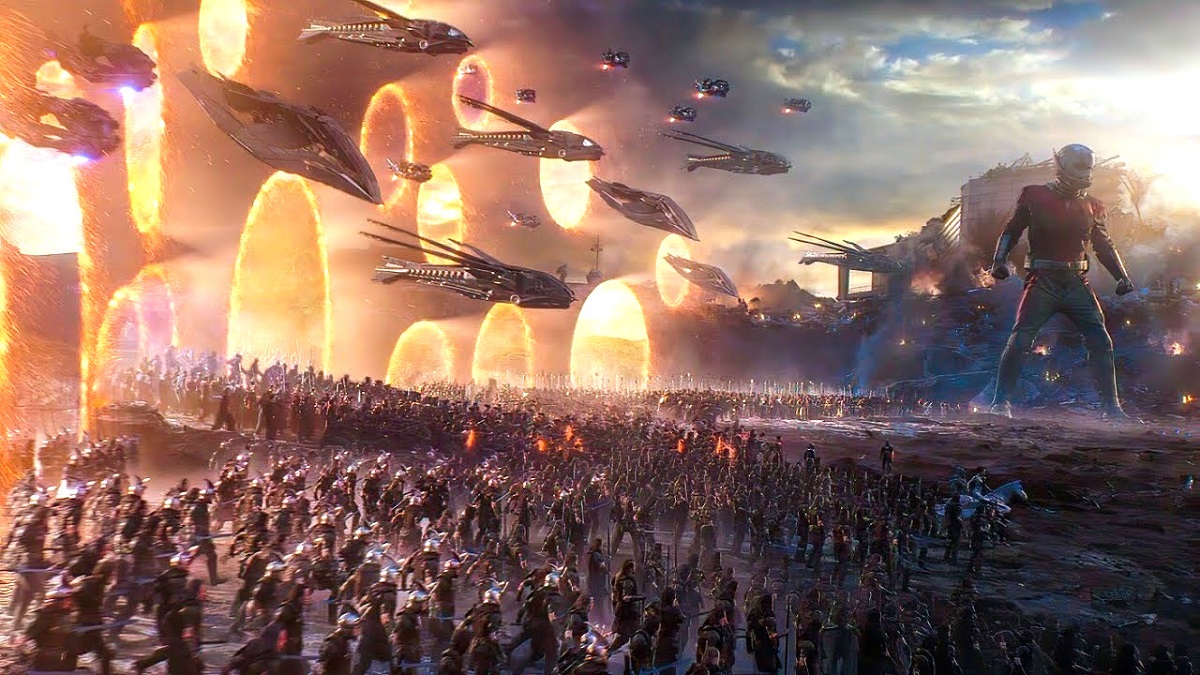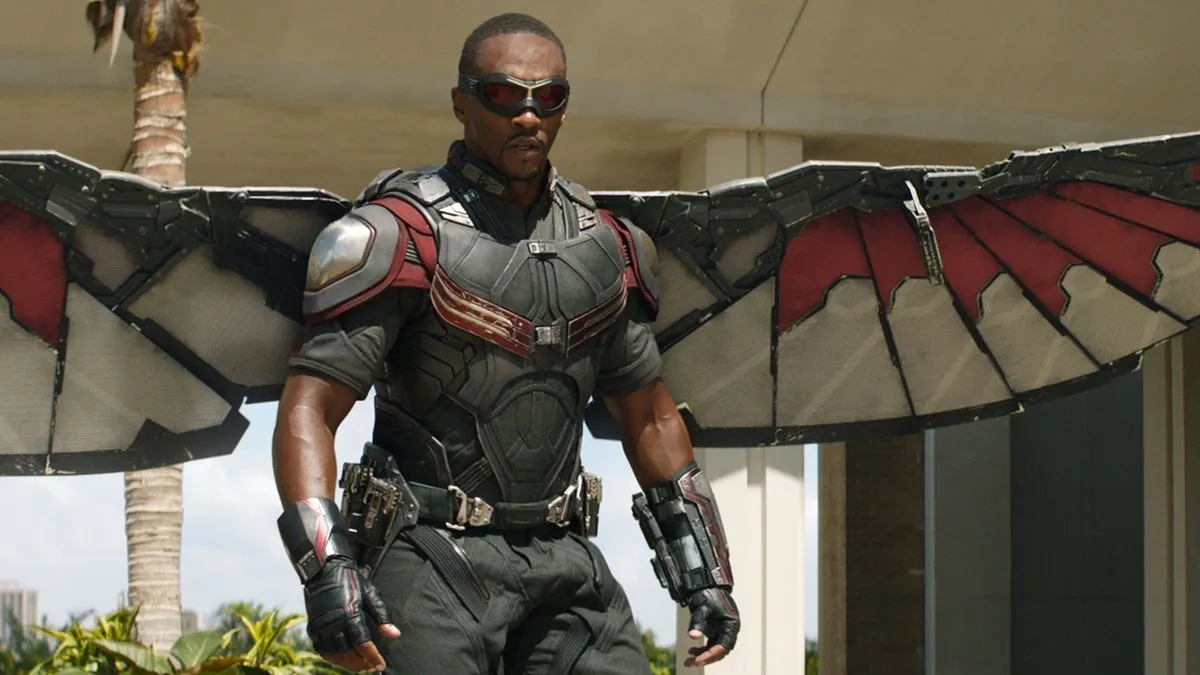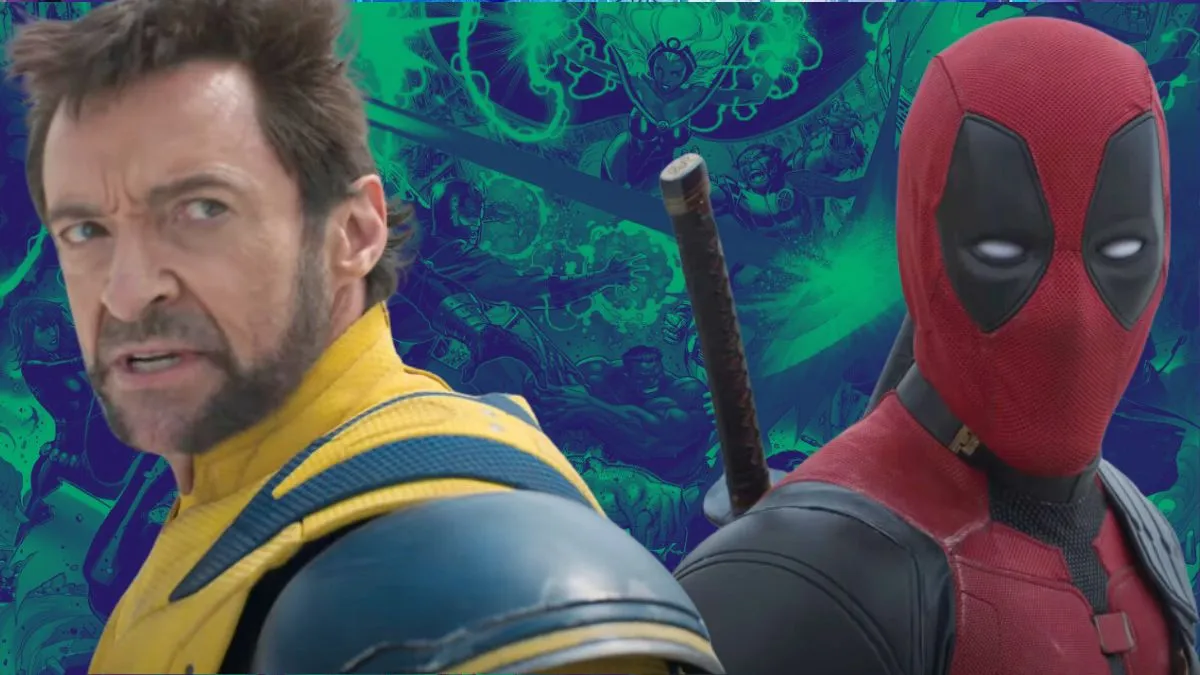Picture this: it’s the evening of April 26, 2019, and even the most remote theaters across North America are packed to the brim with Marvel devotees of all prestige. You and your momentary brethren have taken breath after shaky breath as the current situation (namely, Thanos’ attack on the Avengers compound) seems to escalate in favor of the Mad Titan with every passing moment. Then, the staticky voice of Sam Wilson reverberates around the theater, and indeed, the world; “on your left.”
It’s now every patron’s heartbeat that’s escalating as the Guardians of the Galaxy, the warriors of Wakanda, and just about every Infinity Saga mainstay leaps into the fray behind Captain America. With everyone—not least of whom Sam—now back at his side, all it took was one, herculean whisper of “Avengers, Assemble” to fan the flames sparked by Sam into one of the most sensational blazes of a cinematic battlefield the world has ever seen.
And now, five years after the theatrical release of Avengers: Endgame, “on your left” has cemented itself as one of the most kinetically definitive quotes in the history of the MCU, and it’s not at all difficult to see why.
“On your left” belongs to the MCU

It is, of course, easy to mark “Avengers, Assemble” as the major tentpole of a soundbyte prior to that final confrontation with Thanos (and by golly, did Chris Evans ever sell the moment to perfection). The thing is, though, Captain America has been rhyming off that call to action since before the majority of the MCU faithful had been conceived (the Avengers first appeared in comics in the fall of 1963). In no way does this diminish the quality of the line, but the weight of the moment effectively wrote itself, given the historic, pre-MCU reputation of the declaration.
“On your left” didn’t have that same foundation; the quote was a beast of Marvel Studios’ own making, and it has no one but itself to thank for nailing this callback so succinctly, subtly, and evocatively. “On your left” was, of course, the first words that Sam and Steve ever shared with one another on-screen after encountering one another on a public running track in Captain America: The Winter Soldier. While they were both using the track to exercise, the profoundly-roided Steve lapped Sam several times over, marking each instance by calling out “on your left” whenever he was about to pass Sam; a friendly jest that was just the tip of the iceberg of a much deeper trust between the two men.
With friends like Sam…

While no one can quite replace Bucky in Steve’s heart, the friendship he shares with Sam is of equal—if not greater—importance to Steve’s character arc, and subsequently the wider themes that the Avengers encapsulate as a team. When the world quite literally turned against Steve during the events of The Winter Soldier, Sam was a crucial lifeline for him to turn to, later aiding Steve, Natasha, and Nick Fury against a then-brainwashed Bucky and a largely compromised S.H.I.E.L.D. agency.
From then on, Sam remained one of Steve’s most readily steadfast allies, sticking with him through Ultron, the Avengers’ in-fighting, right up until the last breath he would breathe for five years in Infinity War. And while everyone needs a great friend, Steve—the perennial man out of time who left everything he knew back in the 40s and therefore certainly dealt with a unique breed of loneliness—was perhaps in need of someone like Sam more than anyone.
How appropriate, then, that it’s Sam who’s the first to greet Steve when he and the rest of Earth’s newly-revived champions begin to portal themselves to ground zero of Thanos’ attack, the fire in each of their eyes screaming that they’re all but ready to stand behind Steve’s leadership once more, united together—bonds of all shapes and intensities between them—against the most impossible odds yet. And at the heart of this maze of allies sat Sam, whose bond with Steve knew very few equals; a bond that began with “on your left.”
If Marvel Studios is smart, they’ll have worked overtime to ensure that “on your left” didn’t make its way into the script of Captain America: Brave New World, where Sam is set to carry the legacy of the star-spangled shield in the biggest way yet. It’s one thing to wink at the audience with a callback, but it’s quite another to make that callback mean something so deeply important to the characters as well; that was the homegrown strength of “on your left,” and was but one piece of the masterfully-crafted conclusion that Avengers: Endgame was to the undisputed golden era of the Marvel Cinematic Universe.






